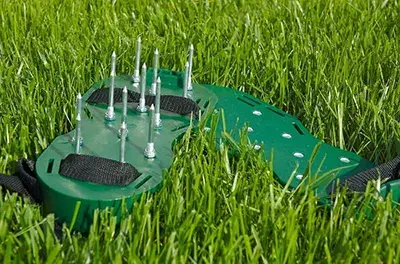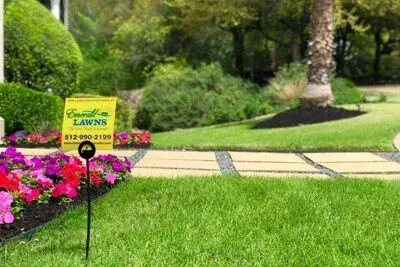 Centipede is one of the lowest maintenance and eco-friendly grasses available for warm season planting areas such as Austin. It will survive from the lower transition zone areas of the United States to the South. It performs well on low pH soils (5-5.5) and poor soils. Centipede grass is ideal grass for the homeowner who wants a fairly attractive lawn that needs little care. It does not require much fertilizer or mowing, and compared to other lawn grasses, is generally resistant to most insects and diseases.
Centipede is one of the lowest maintenance and eco-friendly grasses available for warm season planting areas such as Austin. It will survive from the lower transition zone areas of the United States to the South. It performs well on low pH soils (5-5.5) and poor soils. Centipede grass is ideal grass for the homeowner who wants a fairly attractive lawn that needs little care. It does not require much fertilizer or mowing, and compared to other lawn grasses, is generally resistant to most insects and diseases.
However because of its inability to recover from weed infestation, and insect and diseases plus has a thin texture that doesn’t hold up well to traffic.
Emerald Lawns strongly recommends that you do not install Centipede grass in your yard.
Characteristics
Centipede grass is a warm season lawn grass that forms a thick sod and grows uniformly. It has a course texture with short upright stems that grow to about 3 to 5 inches and spreads by stolons. This aggressive grass can produce a dense, attractive, weed-free turf that is more shade tolerant than Bermuda grass but less shade tolerant than St. Augustine and Zoysia grass.
Living Conditions
It requires less mowing compared to other turf grasses and is drought tolerant, making it perfect for Texas weather. Centipede grass survives in mild cold temperatures, as long there are not hard freezes since it does not go into true dormancy. With light freezes it will turn brown but recover and re-green as the temperature rises. Low centipede fertilizer requirement is another eco-friendly aspect of centipede grass. It grows will in sandy and acidic soils. When healthy, this full sun and slightly shade tolerant grass is aggressive enough to choke out weeds and other grasses.
Maintenance
Mow lawn at one inch at the time of initial greenup. To control crabgrass, goosegrass, and other annual weeds, apply herbicides when forsythia is in bloom. Keep in mind centipede grass is sensitive to certain herbicides, such as 2,4-D. Power rake to remove thatch in late May if necessary and fertilize with 1 to 2 pounds of nitrogen per year, per 1000 square feet. Inspect for white grubs by cutting three sides of one foot square piece of sod and laying it back to reveal the root zone.
Feel free to reach out to our lawn care experts at Emerald Lawns Austin if you have any questions about what kind of grass you should install on your lawn. Call our lawn care company at (512) 990-2199, or contact us online for information.
- Not very cold-tolerant (susceptible to winterkill) and not good in extreme heat
- Needs acidic soils and supplemental iron applications.
- Does not handle traffic very well, so kids and dogs will cause alot of damage
- Extremely susceptible to chinchbug damage and nematodes
- Is a lighter green than most grass types so the texture is not usually desireable




